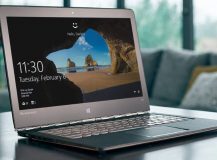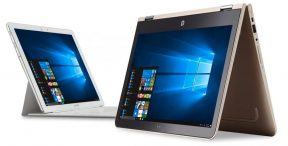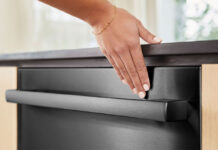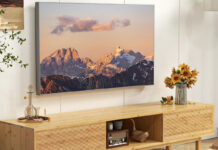 According to pretty much everyone, Windows is the most popular PC operating system in the world (sorry iOS). However, if you are currently using Windows 7, I have bad news for you. After just ten years of support, Microsoft will no longer be supporting the operating system as of January 14, 2020. You can read all the details about it in a recent blog by Best Buy tech editor Brad Moon. But you don’t need to worry. You can upgrade your machine to Windows 10, and in this blog, I’m going to show you how.
According to pretty much everyone, Windows is the most popular PC operating system in the world (sorry iOS). However, if you are currently using Windows 7, I have bad news for you. After just ten years of support, Microsoft will no longer be supporting the operating system as of January 14, 2020. You can read all the details about it in a recent blog by Best Buy tech editor Brad Moon. But you don’t need to worry. You can upgrade your machine to Windows 10, and in this blog, I’m going to show you how.
Ensure your PC is Windows 10 ready
If you have a newer PC then chances are you’ll be able to upgrade directly to Windows 10. However, if you happen to have an older machine that you bought way back when Windows 7 was introduced, then it is likely too old to run Windows 10. The basic requirements for Windows 10 are a 1ghz or faster CPU, 1 Gb of RAM (or two if 64-bit) and 32gb or more of hard drive space. Those are just minimums, though, so if you only have that in your PC, I’d say it’s time for a new machine.
Upgrade your current PC to Windows 10
 If you do have a PC that’s ready to go from Windows 7 to Windows 10, I would definitely take a look at the “Upgrade to Windows 10: FAQ” over at the Microsoft support site first. They have all the answers and details to help you understand what you need and what you have to do to upgrade. For instance, devices with a 32 GB hard drive or older devices with full hard drives might need additional storage space to complete the upgrade. The FAQ helps you through how to free up space (hint: they tell you to delete stuff).
If you do have a PC that’s ready to go from Windows 7 to Windows 10, I would definitely take a look at the “Upgrade to Windows 10: FAQ” over at the Microsoft support site first. They have all the answers and details to help you understand what you need and what you have to do to upgrade. For instance, devices with a 32 GB hard drive or older devices with full hard drives might need additional storage space to complete the upgrade. The FAQ helps you through how to free up space (hint: they tell you to delete stuff).
Unfortunately, if you are just getting up to speed on the whole Windows 7 being phased out business, then you missed out on an opportunity to get a free upgrade to Windows 10. I know, bummer right? As of July 29, 2016 anyone who needs to upgrade to Windows 10 has to purchase a copy of the operating system.
Once you’ve purchased a copy or received your Windows 10 product key, you’ll be able to start the process. It is recommended that you disable your anti-virus software and also delete your Windows 7 apps before starting. These may prevent you from successfully upgrading to Windows 10. Also, some older apps may not work at all with Windows 10, which is why the suggest a fresh install of all your apps afterwards.
 If you’ve ever installed a program, game or other OS, then you know what happens next. After you begin the upgrade process, you’ll need to enter that product code, click “upgrade this PC now” and follow the prompts to install. You will be given a choice to keep your personal files and apps, but again, just backup your files and do a clean install for best results. After the installation completes, you’ll need to go through the easy out-of-box-experience (OOBE) to finish setting up Windows 10, and then you’ll once again see your familiar desktop and every new feature included with Windows 10.
If you’ve ever installed a program, game or other OS, then you know what happens next. After you begin the upgrade process, you’ll need to enter that product code, click “upgrade this PC now” and follow the prompts to install. You will be given a choice to keep your personal files and apps, but again, just backup your files and do a clean install for best results. After the installation completes, you’ll need to go through the easy out-of-box-experience (OOBE) to finish setting up Windows 10, and then you’ll once again see your familiar desktop and every new feature included with Windows 10.
Another option is to just turf your old machine and pick up a brand new PC at Best Buy. Just sayin’. Or, if you do have any issues with your upgrade, just get in touch with the Best Buy Geek Squad who can pretty much help with any techie questions you may have. Happy upgrading!



